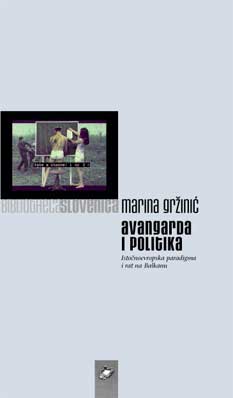
Avangarda i politika
One always searches for some symbolic point from which one can claim that something ended and something else began, even though there are no beginnings and no endings.
More...We kindly inform you that, as long as the subject affiliation of our 300.000+ articles is in progress, you might get unsufficient or no results on your third level or second level search. In this case, please broaden your search criteria.

One always searches for some symbolic point from which one can claim that something ended and something else began, even though there are no beginnings and no endings.
More...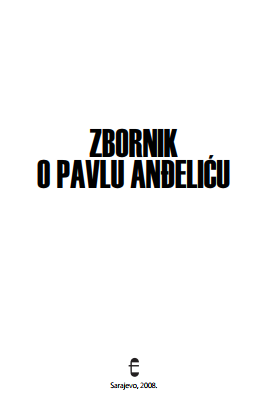
U organizaciji Franjevačke teologije u Sarajevu održan je 14. i 15. listopada 2005. godine Međunarodni znanstveni skup posvećen uglednom arheologu i povjesničaru dr. Pavlu Anđeliću (1920-1985). Gotovo cijeli svoj radni vijek Anđelić je posvetio istraživanju bosanskoga srednjovjekovlja. Prvotno je studirao pravo, a po završetku studija radio kao kotarski sudac u zavičajnom Konjicu. Već za vrijeme sudačke službe počeo se zanimati za povijesno-kulturno nasljeđe. Po prelasku u Sarajevo (1956), ubrzo je, kao uposlenik Zemaljskoga muzeja, upisao studij povijesti i sasvim se okrenuo proučavanju prošlosti Bosne i Hercegovine. Bavio se pitanjima arheologije od prethistorije do srednjega vijeka. U svojim se istraživanjima s posebnim interesom okrenuo srednjovjekovnim gradovima bosanskih vladara, te pitanjima arheološko-historijske topografije, sfragistike, heraldike, epigrafike i diplomatike. Sam je vodio iskopavanja na više arheoloških lokaliteta: grad Bobovac, vladarski dvori u Kraljevoj Sutjesci, crkva Sv. Marije u Jajcu, grad Blagaj kod Mostara, krunidbena i grobna crkva u Milima (Arnautovićima) kod Visokog. Zapaženi doprinosi rasvjetljavanju povijesti bosanskoga srednjovjekovlja, akribija u znanstvenom radu, utemeljenost i visoka pouzdanost rezultata istraživačkoga rada Pavla Anđelića, razlozi su koji su nas potaknuli da znanstvenim skupom obilježimo dvije njegove obljetnice: osamdeset pet godina od rođenja i dvadeset godina od smrti. Pritom smo se vodili i činjenicom da je on, kao franjevački đak, osam godina pohađao Franjevačku klasičnu gimnaziju u Visokom gdje je stekao klasičnu izobrazbu. Skup je inicirao Dubravko Lovrenović s ciljem da se njime oda ne samo počast uglednom znanstveniku, nego također svrati i pozornost na njegove znanstvene doprinose na polju arheologije i historiografije Bosne i Hercegovine. U Zborniku je sabrano i objavljeno ukupno devetnaest referata. Jedan dio njih bavi se Anđelićevim doprinosima na polju arheoloških istraživanja, a drugi dio zahvaća tematiku koja prostorno i vremenski ulazi u okvir njegova istraživačkoga područja.
More...
Neben Populär- und Fachliteratur, Rundfunk, Film, Fernsehen, Theater und moderner elektronischer Medien stellen die Museen eine der Methoden und Mittel für die Vermittlung des historischen Wissens dar. Im Unterschied zu anderen Medien beinhalten die Museen dreidimensionale Objekte als ihren wesentlichen Bestandteil und ihre Eigenheit. Daraus ergeben sich mediale Vorteile, aber auch manche Schwierigkeiten, die allesamt in dem mittlerweile weit entwickelten Fach Museologie kontrovers diskutiert werden. Die Museen sind ein Phänomen der abendländischen Kulturgeschichte. Ihre Ursprünge liegen in der Beschäftigung der Humanisten mit der Antike und später in den Schatz- und Kuriositätenkammern der europäischen Adligen und Herrscher. Während der Aufklärung im 18. Jahrhundert und insbesondere im Laufe des 19. Jahrhunderts, als die Idee der Bildung stark an Bedeutung gewann, wurden die Museen immer mehr zu Bildungsanstalten. Aus dieser Zeit stammt auch die Idee des Franziskaners Ivan Franjo Jukić von der Gründung eines bosnischen Museums, die erst im Jahr 1888 mit der Errichtung des Landesmuseums in Sarajevo verwirklicht werden konnte. Jukićs Vorhaben war allerdings mehr von nationalen und patriotischen als von bildungsaufklärerischen Motiven geleitet. Seine Vorstellung vom Museum entsprach mehr der eines “Tempels” der (nationalen) Musen als der einer Lehrstätte. Die Dichotomie “Tempel” oder „Lernort“ kennzeichnet die Diskussion um Sinn und Zweck der Museen bis heute. Die jeweiligen Positionen werden am deutlichsten an dem Streitpunkt sichtbar, wie museale Gegenstände in Dauer-, Wechsel- oder Spezialaustellungen präsentiert werden sollen. Damit im Zusammenhang steht auch die Frage, was als “museal” und damit sammlungs- und erhaltungswürdig gilt. Als Attribute der musealen Gegenstände werden im allgemeinen Alter, Seltenheit bzw. Originalität und materieller/ideeller Wert bzw. Kostbarkeit angesehen. Jedoch sind all diese Merkmale relativ und unterliegen den museumstheoretischen- und ideologischen Wandlungen, wie das am Beispiel des Attributs Originalität zu zeigen versucht wird. Die Auffassung der Museen als “Tempel” legt Wert auf “Originalität” der Exponate. Wenn diese jedoch als “Lernorte” verstanden werden, tolerieren, ja postulieren sie die Einsetzung von Kopien, Repliken, Duplikaten, Rekonstruktionen und Inszenierungen. In diesem Fall wird die Didaktik besonders groß geschrieben; was dieses Problemfeld betrifft, so stehen den statischen musealen Darstellungen des 19. Jahrhunderts die dynamischen Präsentationen des 20. und 21. Jahrhunderts gegenüber. Die Museumsdidaktik ist mittlerweile als eine selbständige Disziplin etabliert und ist aus der Museumsarbeit nicht mehr wegzudenken. Ob Originale oder Kopien, ob statische Ausstellungen oder dynamische Inszenierungen – in all diesen Fällen werden in Museen Gegenstände gezeigt, die aus ihrem ursprünglichen Kontext herausgerissen wurden. Dadurch verlieren sie manches von ihrer “Aura” (Walter Benjamin), werden aber gleichzeitig durch entsprechende Darbietung zu symbolhaften Objekten und “Semiophoren” (Krzysztof Pomian), d. h. Zeichenträgern. Der Beitrag berücksichtigt in erster Linie die deutschsprachige Literatur über Museologie und stützt sich zum großen Teil auf die Museumspraxis des Autors in deutschen Museumseinrichtungen. Besonderes Augenmerk wird dabei den kleinen Museen und lokalen oder regionalen Museumssammlungen gewidmet, denn in der Vermittlung historischen Wissens spielen gerade diese eine besondere Rolle. Zum Schluß werden einige Überlegungen angestellt, wie das Ahdname als zentrales historisches Dokument des Franziskanerordens in Bosnien und des bosnischen Katholizismus museal präsentiert werden könnte.
More...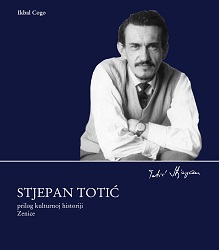
Since the mid of 1950-ies a visual arts scene, specific in many ways, has flourised in the region of the city of Zenica. Firstly, the association of amateur artists was founded in 1956; afterwords the Visual Arts Association Zenica founded in 1974 whereas the Art Gallery started its activities within the City Museum towards the end of 1981. Visual arts scene of the second half of 20th century involved the artists of different sensibility and poetics of art; among them most famous ones were Ljubomir Perčinlić, Mirko Marić i Anto Kajinić. In addition to these artists we should also mention Tomislav Perazić, Muhamed Bajramović, Irfan Handukić, Miroslav Šetka, Jelenko Butina, Anto Čabraja, Mensur Begičević, Duško Abramušić, Jasmin Kukavica and others. Yet, the first visual artist with the academic education was Stjepan Totić, born in December 1927 in Zenica. He started his education at the Visual Arts Academy in Ljubljana in 1959 and graduated in 1963. Later, he finished his specialist studies at the same Academy in 1964/1965. Throughout his career Stjepan Totić worked in graphic and printing industry (he worked as the visual illustrator and later as the technical editor of the city periodical Naša Riječ). He made over 100 of different illustrations for the newspapers (the first ones appeared during 1956); he also gave the artistic form for about ten books (cover page illustartions), and he also wrote visual arts critiques and created a relatively small but very specific artistic collection. As he used to describe his own painting he was, primarily, a painter of figuration and portraits. Many visual arts critics wrote about his work, just to mention a few: Azra Begić, Branka Perišić, Meliha Husedžinović, Slobodan Blagojević. He was a member of the Visual Arts Association Zenica from 1974 until the beginning of the recent war. The artistic expression of Stjepan Totić was mostly influenced by the Slovenian painter Gabrijel Stupica. Totić had only one independent exhibition in Zenica in 1980 and it was accompanied by the catalogue. He withdrew from active artistic life of the city in the second half of 1980-ies. In Spring 1992, at the very beginning of the war activities, Stjepan Totić left for Innsbruk (Austria) where he lived for the rest of his life and died in 2009. He was married to Marija Helena Totić and had two sons, Josip and Krunoslav, and the daughter Margareta. His painting „Trapez“ used to be the permanent exhibit of the City Museum of Zenica from 1986 to 2007.
More...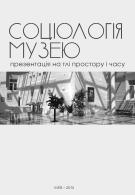
У монографії оприлюднені наукові результати дослідження соціології музеїв відомих у соціологічній науці та музеєзнавстві авторів. Мета монографії полягає у презентації нового наукового напряму – соціології музеїв, що дозволить об’єднати множинність розрізнених знань про музеї, напрацьованих у сучасній гуманітаристиці, у єдину систему, виокремити новий напрям наукового знання, а також визначити соціальну місію та перспективи розвитку музеїв у новому українському суспільстві.
More...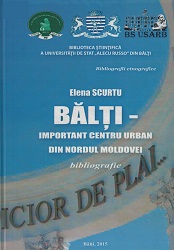
Bibliografia „Bălţi – important centru urban din Nordul Moldovei” propune cititorilor peste 3 500 documente despre evenimentele istorice desfăşurate pe teritoriul municipiului Bălţi, despre realizările în toate domeniile de activitate umană, începînd cu anii 90 ai sec. 20 pînă în 2015, perioadă marcată de importante transformări sociale, economice şi politice. Poate servi drept un suport documentar şi educativ de mare importanţă în cultivarea dragostei pentru pământul Moldovei. Dispune de indexuri de nume şi titluri.
More...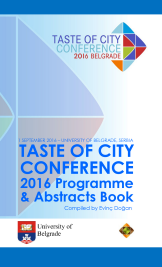
Taste of City Conference 2016; Place: University of Belgrade, Serbia; Date: 1st of September 2016
More...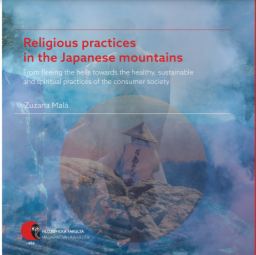
The study examines the Japanese mountains as places of religious practices. The author looks at both the historical and the present-day religious practices enacted in the mountains and asks how the logic of the market has shaped them. By looking through the historical development of religious practices in the mountainous locality of Tateyama, the first three chapters offer an understanding of the relationship between mountains and notions of the afterlife. The case of Tateyama, a popular pilgrimage site during the Edo period, provides an insight into the pilgrimage place and its mountain cult taking into account the economic aspects in the maintenance of the cult. Drawing on insights gained through field research in the Japanese mountains of Tateyama and Dewa Sanzan, the author explores the present-day re-enactments and sustenance of religious practices and their intersection with the cultural heritage concept. These observations have provided a useful perspective on adjustments between providers of religious practices and participants. Although seen as marginal practices, austerities such as taki gyō and the complexity of qualities associated with them are introduced in the last chapter as examples of the creative sustenance of present-day ascetic practices.
More...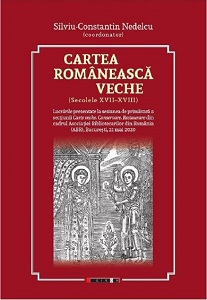
Curchi Monastery, founded in 1773 by Iordache Curchi, had one of the richest libraries, consisting of old documents, manuscripts and printed books. The first evidence of the existence of a library at Curchi Monastery dates back to the 18th century, when the monastery was run by Manasie, the brother of its first founder. Other information about the monastery library dates back to 1814 when Theodosie Sabau, another founder of the monastery, died. The monks gathered in Curchi an appreciable number of books, used in the officiating of the divine services and at the school established at the beginning of the 19th century next to the monastery. In the interwar period, the library had about 4,000 books and documents, which disappeared during the Soviet rule. Only a small number of books have been identified in libraries in Chisinau.
More...
Episcopal, monastic and church libraries shelter thousands of religious books in which donors, hierarchs, priests and teachers recorded the events they thought were most important. We intend to present some of the notes from the researched books from the Episcopal Museum of Huși and those from the libraries of the Secu and Neamț monasteries that provide various information of an institutional, political, social, ecclesiastical, genealogical character or concerning the natural calamities. Our references go especially to the past of the Husi Diocese and of the localities under its jurisdiction.
More...
The article aims at presenting the illustration of the Old Romanian Book collection from the patrimony of the Library of the Romanian Academy, from the 18th century, found in books published in Wallachia. The approach has an interdisciplinary character that involves fields such as history, book history and fine arts (wood engraving). The study presents a selection of illustrations from representative books in the patrimony of the Library of the Romanian Academy from the 18th century, resulting in the iconographic description and identification of the connection between the image and the biblical message. The presentation of the woodcuts is based on the research undertaken in order to support the doctoral thesis.
More...
In the old book fund at Bogdana Monastery (Bacău county), in the process of cataloguing, among many bibliophilic curiosities, there is a copy that we consider to be a typographic forgery. The tile page indicates that it is an Antologhion printed at Râmnic, in 1737, but it is not identical to the Antologhion from Râmnic known from that year (BRV II 215). Inside it, after the title, it continues with Minologhionul from Blaj, since 1781 (BRV II 448). We consulted the catalogues available, including the monography of the printing house (Gabriela Mircea) and we found no mention of it. The careful analysis of the two title pages (the fake and the genuine one) from a historic and bibliographic point of view, led us to identify another typographic forgery in Blaj.
More...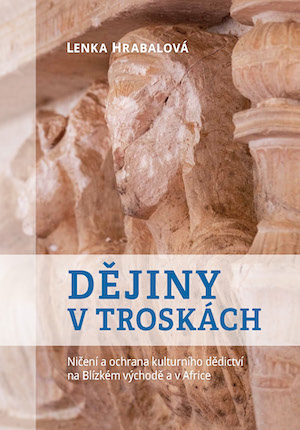
This publication deals with various factors which influence destructions and reconstructions of cultural heritage in the Middle East and North Africa. The destruction of cultural property in the Middle East and North Africa cannot be characterized as purely religious but must be seen in the context of a number of reasons, which may be related to propaganda, strategic and military reasons, or political and ethnic issues. At the same time, it must be borne in mind that jihadist groups are not the only ones that kill cultural and historical objects worth. Book is divided into three main parts. The first is a general introduction to the relevant legislation and its implementation. The second part examines the reasons for destruction and main ideas in reconstructions. It presents two types of destructions present in the region: those motivated by the religion and secular ones, explaining its existence in the Muslim society from historical, sociological, and religious perspectives. The third part is the central part of the dissertation. It consists of five case studies of five countries of the Muslim World: Syria, Iraq, Mali, Yemen, and Saudi Arabia. These studies are based on previous findings and aim to present a foundation for further comparison in the conclusion of the publication.
More...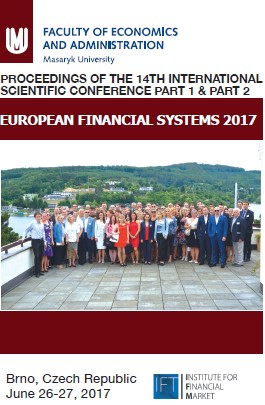
This paper deals with a comparative analysis of the relative efficiency of museums founded by the central authorities in the Czech and Slovak Republics. Through the DEA method, we evaluate data for all 22 Czech and 42 Slovak institutions for 2015. For these purposes, we chose a group of indicators that are available in both countries and where museums have a duty to report. For inputs, there are the founder’s contributions and the number of employees. For outputs, there are the number of visitors, the number of exhibitions and expositions. The results revealed the differences between the Czech and Slovak institutions, which relied especially on the use of inputs and potential to achieve returns of scale.
More...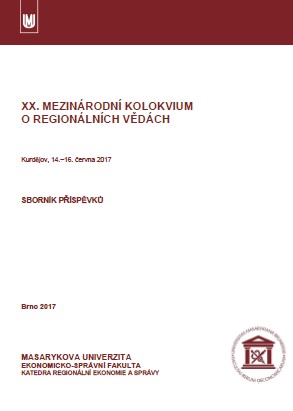
The paper deals with a comparison of the relative efficiency of museums run by municipalities in the Czech Republic and the Slovak Republic. For our analysis, we have used data for 2015 which has been processed utilizing the DEA method. Czech museums founded by municipalities achieve a relatively higher efficiency compared to their Slovak counterparts. This condition is caused by the stronger orientation of Czech museums towards cost minimalization strategies, as well as the choice of organizational structures within the institutions having the lowest cost management. A very important fact is that even though there are indicators which we chose to assess the relative efficiency were comparable, the data were obtained through official channels from Czech Slovak state institutions dealing with statistics in culture. However, they may still be burdened with a high risk of errors and inaccuracies.
More...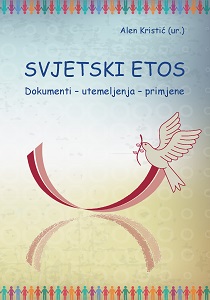
Kad bismo jednom pretpostavili da čovječanstvo svoje nagomilane moralne predodžbe mora svesti na jedno jedino temeljno načelo, i da bi to pravilo trebalo na jednak način štiti od ubojstva, krađe, prijevare, tlačenja i osvete – kako bi glasilo jedno takvo fundamentalno načelo? U svojoj knjizi „Zagonetka svijeta” darvinist Ernst Haeckel nazvao ga je 1899. „najplemenitijim načelom sveopćeg čovjekoljublja”. Ustvari ono pod imenom „zlatno pravilo” već više od 3000 godina tvori cjelokupnu etičku poruku svih svjetskih religija i kultura. U svojoj pučkoj varijanti taj moralni zakon glasi: „Ono što ne želiš da tebi bude učinjeno, ni ti ne nanosi nikome drugom!”1 Zapravo to pravilo ne predstavlja jedino i specijalno njemačku poslovicu, nego je ona rasprostranjena diljem svijeta. Trend povratka vrijednosti i veliko poštovanje nastave etike uvedene u sve škole doveli su do ponovnog otkrivanja zlatnog pravila. Nazvano je „zlatnim” jer ga ne smatramo pravilom koje predstavlja nadopunu već postojećim zapovijedima i zabranama, nego pravilom u ili iznad svih drugih pravila, takoreći njihovom biti i jezgrom.
More...
Within the proposed framework of Trauma, remembrance, recovery, I contextualise and analyse visual art. Beginning from de Botton’s and Armstrong’s definitions of art as a therapy, I continue on to emphasise the importance of remembrance as one of the basic functions (and contents) of art in general. I (re)define the general and special place that art can (and should) have, but with an emphasis on the commemorative sculpture (the so‐ called Memorials in Bosnia and Herzegovina and ex‐Yugoslavian territories). The focus is on the following areas: the Art of Stećak, monuments commemorating the Second World War, as well as those commemorating the most recent war in Bosnia and Herzegovina in the 90s. Stećaks and the Second World War Monuments are connected through their mutual belonging to the pluralistic and humanistic spirituality from which they were both "born", with the distinction of the latter ones being the product of the declarative atheist discourse. I understand the nearly destroyed principle of the common multidimensional identity and life in the Southern‐Slav (Yugoslavian) territories as the crown‐quality of Bosnia and Herzegovina, but also as a forgotten remembrance. The authentic, multidimensional Bosnian and Herzegovinian spirit, instead of being the major export product becomes the idea that the European Union hypocritically falsifies and sells "re‐packaged and recycled" to contemporary, traumatised Bosnia and Herzegovina. Within the same theoretical framework, under the name of A(dis)continuity and/or resurrection of the Art of stećak, I present some of my own sculptures that have been thought out through the (forgotten) remembrance as a result of my doctoral research of the Art of Stećak to‐date. This extinguished tradition, and its five centuries long discontinuity, I turn into A(dis)continuity and I enliven it as my own artistic creation and metaphor. I find parallels between the complex format and meaning of Stećak and the Bosnian and Herzegovinian multidimensional identity, which in itself could almost be a pseudonym for cosmopolitism. By doing this, I once again underline the importance of remembrance in relation to the greatest humanistic values of the shared collective life of the diversities existing in Bosnia and Herzegovina, which should be continuously transfused into hope that is a beacon to the healing from the trauma and towards a better and healthier future.
More...
In this paper we are going to talk and discuss about the creation of the concept of "cultural heritage" in the Spanish law and the characters of the legal definition of cultural property or cultural heritage goods, according with the legal system established by the 1978 Constitution. We will comment some cases of the Spanish Jurisprudence where the concept is developed.
More...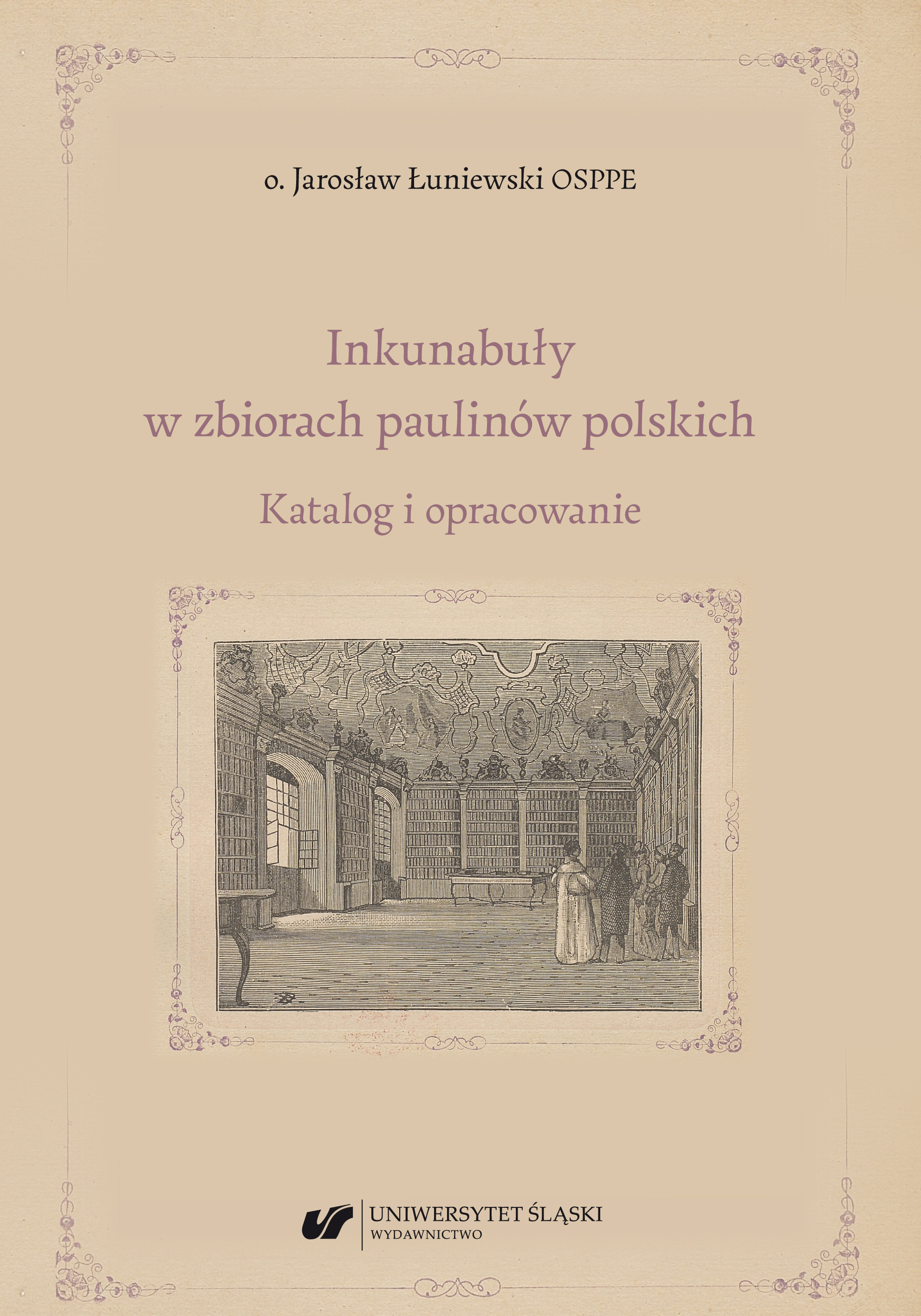
The book presents the history of the establishment of the Pauline Order worldwide and in Poland. The importance of book culture in the spiritual and intellectual life of the Polish Paulines have been discussed. The history of the formation of the library collections of Jasna Góra and Skałeczna has been presented. The profiles of the leading incunabula printers and their professional achievements have been shown. All incunabula of both libraries have been compiled in the form of a catalogue. Descriptions have been prepared in accordance with cataloguing standards with the inclusion of provenance records, the characteristics of the bindings and the provision of bibliographic citations.
More...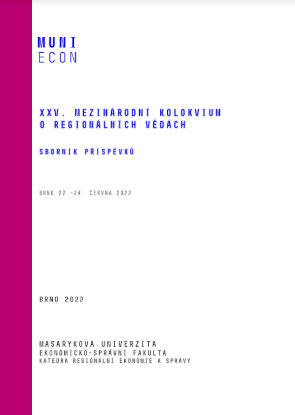
Chateaus (castles) and mansion houses (residences) are a common part of village and town settlements in our conditions in the Czech Republic. Due to the interruption of ownership and property relations to these buildings during the 20th century, many of them lost their original or additional useful purpose, were abandoned and fell into disrepair and ruins. Nowadays, these chateau and mansion houses wish regeneration and renewal, and they have thus become an important historical, urban and social element in the development of the territory and cultural landscape. Due to the absence of a theoretical definition of this type of brownfield, the intention of this paper is to try to do this through a synthesis of expertise in the field of brownfields and the historical context of the existence of chateaus (castles) and mansions and grounds (areas). The intention is also to identify the historical milestones that contributed to the formation of the castle brownfields. The findings are inductively generalized in the created conceptual scheme of the genesis and restoration of chateau and mansion brownfields. The term castle brownfield was defined and the main historical milestones were emphasized, which significantly contributed to the emergence of this type of brownfield in the Czech Republic.
More...